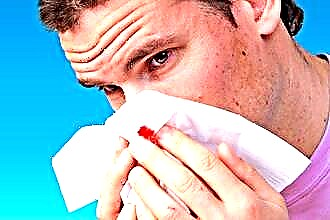Audiological disorders associated with the appearance of a feeling of congestion are caused by dysfunction of the auditory (Eustachian) tube. It performs a drainage and aeration function, due to which the same pressure is maintained in the middle and outer ear. Inflammatory processes in the nasopharynx often provoke inflammation of the auditory canal, as a result of which ventilation of the tympanic cavity is impaired. For this reason, there is a pressure difference on the ear membrane, which leads to congestion.
 How to cure a stuffy ear at home? The principles of treatment for ear pathologies depend on what factors triggered their development. Experts warn that alternative medicine cannot completely replace pharmacotherapy drugs. They can be used exclusively on the recommendation of an otolaryngologist while taking the necessary medications.
How to cure a stuffy ear at home? The principles of treatment for ear pathologies depend on what factors triggered their development. Experts warn that alternative medicine cannot completely replace pharmacotherapy drugs. They can be used exclusively on the recommendation of an otolaryngologist while taking the necessary medications.
Etiological factors
Congestion is an alarming symptom that indicates the presence of pathological changes in the auditory analyzer. The treatment regimen for ENT disease depends on the etiological factors leading to the development of auditory dysfunction. The most common ones include:
- rhinitis;
- sinusitis;
- tonsillitis;
- pharyngitis;
- hypertension;
- otitis;
- labyrinthitis;
- salpingootitis;
- sulfur plugs;
- aerootitis.
Important! Ignoring congestion and hearing impairment for a long time can lead to the development of conductive or sensorineural hearing loss.
As you can see, the provocateurs of inflammatory processes in the ENT organs and the auditory analyzer are nonspecific pathogens. Therefore, the relief of congestion and discomfort in the ear should be started with the treatment of the underlying infectious disease.
Alternative therapy
Using folk remedies for ear congestion, it should be remembered that they have a symptomatic effect. Regular use of decoctions and drops based on medicinal plants helps to alleviate the signs of the disease, but this does not lead to the elimination of infectious pathogens that provoked inflammation.
 Otolaryngologists note that it is advisable to use alternative medicine as topical preparations. They do not contain toxic and synthetic substances that have an ototoxic effect. For this reason, folk remedies are often used to relieve the manifestations of ear pathologies as part of pediatric therapy.
Otolaryngologists note that it is advisable to use alternative medicine as topical preparations. They do not contain toxic and synthetic substances that have an ototoxic effect. For this reason, folk remedies are often used to relieve the manifestations of ear pathologies as part of pediatric therapy.
From medicinal herbs, oils, decoctions and flowers, you can prepare warming compresses, ear drops, ointments and other drugs that have antiphlogistic, analgesic and decongestant effects. Their regular use accelerates the regression of inflammatory processes, due to which the normal functioning of the Eustachian tube is restored.
Otitis media treatment
Otitis media is the most common disease in otolaryngology that can cause a feeling of congestion. Depending on the place of localization of the foci of inflammation, otitis media can be internal, external or middle. Catarrhal processes in the mucous membrane of the tympanic cavity and auditory tube are almost always associated with the development of otitis media, in which the infection spreads to the tissues of the tympanic cavity, Eustachian tube and auditory ossicles.
How to relieve ear congestion at home? You can stop inflammatory processes in the auditory analyzer using the following means:
- oil solution for tamponade: mix 2 tbsp. l. olive oil with 1 tbsp. geraniums. In a heated oil solution, moisten a cotton ball and insert it into the sore ear for 7-8 hours;
- herbal decoction: mix 50 g each of dried chamomile, birch buds and St. John's wort. Pour the mixture of herbs with 1 liter of boiling water and simmer over low heat for 15 minutes. Drink 1 tbsp. decoction three times a day with the addition of ½ h. honey;
- propolis tincture for tamponade: mix a small amount of tincture with water in a 1: 2 ratio. Soak a sterile cotton swab in the prepared solution and insert it into your blocked ear overnight.
If foreign objects enter your ear canal, do not try to remove them yourself. This will only help push the foreign body into the ear.
Before using the above products, you need to make sure that there is no earwax and foreign objects in the ear canal. Often it is this reason that leads to a feeling of congestion. If you find a foreign body or sulfur plug, seek help from an ENT doctor.
Ear drops
Hearing loss with the simultaneous occurrence of autophony may indicate the development of inflammatory processes not only in the auditory tube, but also in the eardrum. When catarrhal processes appear, the membrane stretches, which becomes a key cause of sound distortion. To speed up the resolution of inflammatory reactions, you can use the following drops:
- from juniper: Mix equal proportions of juniper juice with saline solution. Instill 2 drops of the warmed-up agent into the sore ear three times a day;
- from the agave: dilute ½ tbsp. aloe juice in a little boiled water. Instill 2-3 drops of the solution into a stuffy ear before going to bed;
- from garlic: chopped garlic clove, mix with 100 ml of olive oil. After 10 days, strain the oil solution and mix with the glycerin. Instill 2 drops of the finished product in the congested ear twice a day.
The composition of juniper, garlic and agave includes terpinene, pinene, anthrones, phytoncides and other useful substances. They have a pronounced antiseptic, anti-inflammatory and regenerating effect, which contributes to the early restoration of the integrity of the affected tissues.
Do not use ear drops for otitis media at the stage of perforation of the tympanic membrane. The irritating substances that make up the drops will provoke even more inflammation of the mucous membrane in the tympanic cavity.
Flushing
Ear flushing is one of the most effective ways to eliminate inflammation in the ear canal. Experts warn that all manipulations with the auditory analyzer must be carried out very carefully. Otherwise, a deterioration in health and an exacerbation of symptoms of the disease is possible. If your ear is blocked, what to do at home conditions?
conditions?
- clean the ear canal of impurities with a cotton swab dipped in hydrogen peroxide;
- roll a dense turunda out of sterile cotton;
- dissolve 1 teaspoon of salt in 200 ml of boiled water;
- moisten cotton wool in the solution;
- insert a wet swab into the ear canal;
- warm your ear with a scarf or handkerchief;
- after 2 hours, remove the tampon from the ear and apply anti-inflammatory drops.
In the presence of hyperthermia, flushing is contraindicated. A sharp increase in temperature may be a consequence of the development of bacterial flora inside the auditory analyzer, which is fraught with the formation of abscesses. If you experience sharp pains, you should immediately seek help from an ENT doctor.
Heat therapy
Local heating of tissues affected by inflammation promotes the expansion of blood vessels, as a result of which blood flow to the mucous membranes of the ENT organs increases. Improving blood circulation helps to eliminate stagnant processes, due to which the inner diameter of the Eustachian tube increases.Regression of inflammation contributes to the restoration of normal pressure inside the cavity of the middle it. As a result, the feeling of congestion is eliminated, which helps to restore normal hearing acuity.
Do not warm up your ears with the development of purulent otitis media or otorrhagia.
To warm up a sore ear, you can use dry heat in the form of a heating pad, a bag of salt or flaxseeds. During the procedure, several important rules must be taken into account:
- calcine the filler in a dry frying pan for 1-2 minutes;
- pour the filler into a woven bag, then tie it;
- lie down on a warm bag with a sore ear for 15-20 minutes;
- perform the procedure three times a day for a week.
For thermotherapy, otolaryngologists recommend using the so-called "blue lamp" (Minin's reflector). The device is designed for physiotherapeutic treatment of inflammatory processes in the ENT organs. The effectiveness of thermotherapy is due to the influence of infrared radiation, which promotes intensive heating of the surface layers of the hearing organ.
Compresses
A warming compress is a reliable way to locally increase the temperature, which helps to restore normal blood microcirculation in tissues. Regular use of medicated dressings leads to the resorption of infiltrates in the lesions and outflow of lymph, due to which the swelling of the mucous membranes decreases. This leads to the unblocking of the Eustachian tube and, accordingly, the elimination of congestion.
leads to the resorption of infiltrates in the lesions and outflow of lymph, due to which the swelling of the mucous membranes decreases. This leads to the unblocking of the Eustachian tube and, accordingly, the elimination of congestion.
The procedure for applying a compress:
- fold the gauze in 4-5 layers and make a slit in it for the auricle;
- similarly prepare a layer of cellophane and cotton wool;
- moisten gauze in an alcohol solution and apply it to the area behind the ear;
- cover the gauze with cellophane and a layer of cotton wool;
- warm your ear with a scarf or woolen shawl.
To achieve the desired therapeutic effect, it is advisable to perform the procedure twice a day for a week. In the absence of positive dynamics, you need to be examined by an otolaryngologist.



